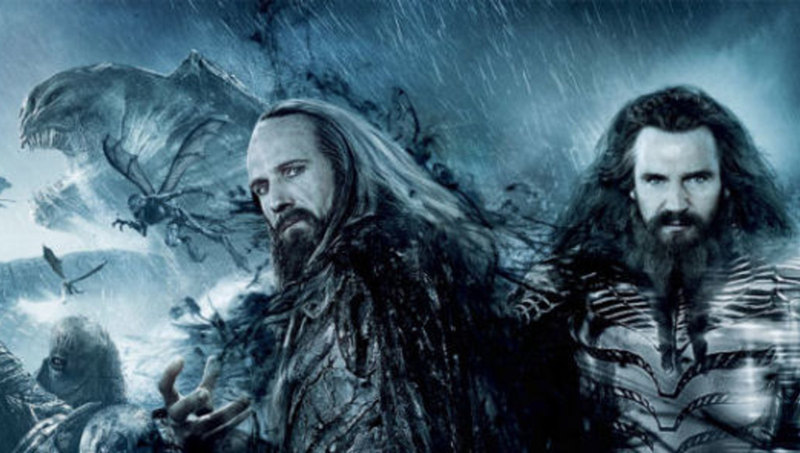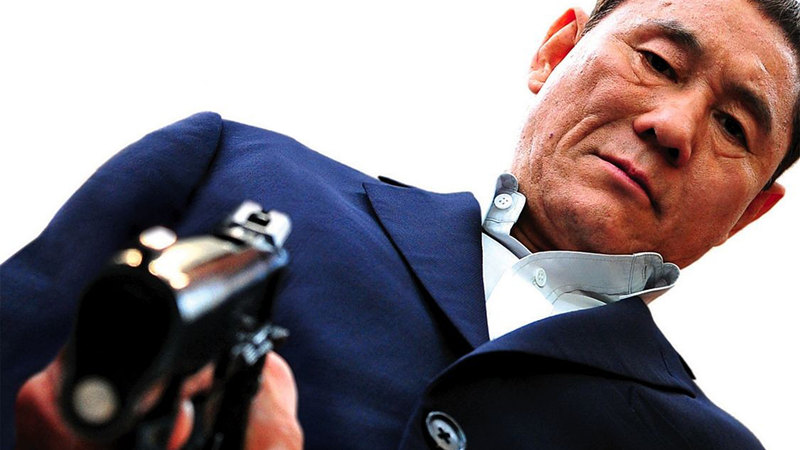I can’t imagine anyone watching “Heaven’s Gate” (1980) for the first time on this Criterion Blu-ray would identify it as the “unqualified disaster” Vincent Canby labeled it upon its release, a label also applied by many of his peers and one that has proven annoyingly sticky in the ensuing three decades. Michael Cimino’s chronicle, based on the historical record, of a full-blown class war waged by Ivy League elites against European immigrants toiling on the Wyoming plains is a seductive Western epic with the kind of lush widescreen landscapes that write their own mythology and also sold America not only to generations of pioneers, but to generations of movie audiences throughout the world.
I find it equally difficult to see “Heaven’s Gate” as the great misunderstood masterpiece of the ’80s its boosters have made it out to be. Doomed by gleeful pre-release reports of its budgetary excess and its director’s alleged hubris, it surely qualifies as a film maudit, but the final product, presented here in the 216-minute director’s cut that was pulled from theaters after a week, doesn’t justify the breathless hosannas either, at least not to my eyes.
“Heaven’s Gate” is particularly beautiful if not particularly moving. I don’t want to gloss over the first part of that statement. The film was shot on location in Montana and Idaho, straddling the continental divide, and the infinite perspectives are drenched in vernal greens that provide a poetic counterpoint to the muddy browns and gray-white clouds of industrial smoke that comprise the less-than-ideal living conditions in town. Perhaps the movie’s true star is cinematographer Vilmos Zsigmond who crafts a visual world that is both ineffable and infernal and which has never looked more vibrant than in this digitally restored version.
If only the film’s on-screen stars were as compelling. Writer-director Cimino settles for some familiar formulas, most notably the Western tough guy (actually, two tough guys in this case) in love with the free-spirited whore. Genres are built on formulas, of course, useful both for the ways they are followed and subverted, but Cimino places much of the film’s dramatic weight on the love triangle that develops between the three leads, and I don’t find it a very convincing one.
Marshall James Averill (Kris Kirstofferson) and mercenary Nate Champion (Christopher Walken) both vie for the affection of brothel madame Ella Watson (Isabelle Huppert) who, in turn, wants to be able to love them both equally. Huppert was a controversial choice for the role, her French accent out of place among the German, Russian and Slavic voices that make up the rest of the immigrant population, but Ms. Huppert has never been anything less than magnetic, and that’s just as true here as in any film. It’s impossible to take your eyes off her and not just because this is a clothing-optional performance.
However, I just never felt a genuine affection or attraction between her and either of her men. I can make no argument to support my perception. Chemistry is a nebulous concept, and the viewer is just as important an element in the reaction as any other. A good portion of the middle act of the film involves Averill and/or Champion pitching woo to Ella while waiting for the big conflict to break out, and if you don’t feel the passion, the film seems a bit rudderless in this section.
I supposed I should actually talk about said “big conflict.” After a lengthy and unfairly derided prologue set at the 1870 Harvard graduation ceremony in 1870 (the dance does not last an hour as some reviews seem to suggest), the film leaps forward twenty years and West a few thousand miles. The Stock Growers Association of Wyoming, some of whom were in that graduating class, has decided that immigrants flooding into Johnson County are bad for business, so they have settled on a fairly simple solution: They will kill them. With the support of local law and even President Benjamin Harrison, the power brokers put 125 names (including Ella’s) on a death-list and hire a posse to enforce it (fifty dollars per kill). We find out about the plan fairly early, but the genocidal hell is not unleashed until the bloody final act.
The Battle of Johnson County provides an interesting contrast in styles. Much of “Heaven’s Gate” exemplifies the old heroic model of epic filmmaking, the hefty, athletic kind that was always a document of its own production, where trains had to be hauled in laboriously and hundreds of bodies had to be arranged in space, the kind of weighty endeavor that has been all but eliminated in a CGI era unconcerned with the ontology of the photographic image. I sure do appreciate it, and to hell with those who call Cimino’s fetishistic adherence to historical reproduction a folly.
However, the climactic battle is shot in the hectic, close-quarters, rapidly edited style more typical of the modern blockbuster with its “intensified continuity”. I understand why Cimino chose this approach, to emphasize the chaos and the senselessness of the moment, but I found myself pining for the elegant perspective of the rest of the film. I am certain I would have viewed the battle sequences more generously if I wasn’t poisoned by the barely-there incoherent action spasms of the past few decades.
In sum, I was almost always engaged, but rarely knocked out, and while there are many luminous shots, I can’t think of a scene or sequence that really stands out in my memory either. I wish it was either dud or revelation; I just see it as a serviceable genre entry with a welcome awareness of class struggle often missing from the grander Western myths. That’s nothing to sneeze at, mind you. I was going to add “but it’s also nothing to celebrate” but having the director’s cut of an unfairly maligned and crassly mutilated film is reason for celebration. So maybe one hosanna would be OK.
Video:
The film is presented in the “director approved” 2.40:1 aspect ratio. The Restoration Demonstration included on the disc shows just how startling the transformation for this restored transfer has been. The original negative of the director’s cut (Cimino’s preferred version) had been cut by United Artist for a truncated theatrical release and could not be used for this restoration. However, the original color separations were still available and provided and the result is a new transfer with the “original” colors. Comparisons to the unrestored version are eye-opening: a fairly flat palette becomes supernally green or whatever shade nature provides. Wow.
The image resolution is also sharp: detail stands out clearly both in large crowd shots and in inserts (text that is clearly visible, etc.) Overall, an excellent transfer.
Audio:
The DTS-HD Master Audio 5.1 soundtrack is not quite the revelation that the video transfer is, but it’s still very strong. The film’s score by David Mansfield (a violinist, fiddler, etc. who made his debut as composer on this film and also appears in the movie) is a magnificent collection of tradition songs from the era and the lossless audio renders them with resonance. The surround tracks are not used quite as extensively as some 5.1 arrangements, but the audio is crisp and close to flawless. Optional English subtitles support the English dialogue; German, Slavic, Russian dialogue is not translated, as per Cimino’s wishes.
Extras:
The 216-minute restored feature takes up all of Disc One.
Disc Two doesn’t quite match the running time and can’t help but seem a bit insubstantial by comparison. The main feature is an illustrated audio conversation (31 minutes) between Cimino and producer Joann Carelli. Cimino spends a lot of time staking his claim as “untrained” by traditional standards (he thinks of himself more as architect than writer), but once you get past that, there’s a lot of useful information here, including details about his use of multiple cameras during the battle sequences and the subsequent gobs and gobs of footage to be edited (partially responsible for the ever-expanding production schedule). At the end, it’s rather inspiring to hear him proclaim, “’Heaven’s Gate’ is finally complete.”
The disc also includes 2012 interviews with Kris Kristofferson (9 min.), composer David Mansfield (9 min.) and assistant director Michael Stevenson (8 min.) We also get an all-too brief restoration demonstration (2 min, 30 sec) but, boy, are the pre- and post- comparisons amazing.
The disc also includes a short Teaser and a TV Spot.
It’s disappointing that there’s no substantive analytical feature included, but the labor that went into the digital restoration of the Director’s Cut is impressive in its own right.
The 40-page insert booklet includes an essay by writer and curator Giulia D’Agnolo Vallan as well as an interview with Cimino that was originally published in the November 1980 issue of “American Cinematographer.”
Film Value:
I guess it all boils down to this: I like “Heaven’s Gate” just fine, but I don’t love it. I wish I did. It’s fun to participate in the redemption of a film maudit. Regardless, Criterion’s digitally restored transfer of the 216-minute Director’s Cut is a glorious achievement. The extras are a bit lacking, but hey, I guess you’ll be pretty exhausted by the time you finish this epic anyway.


